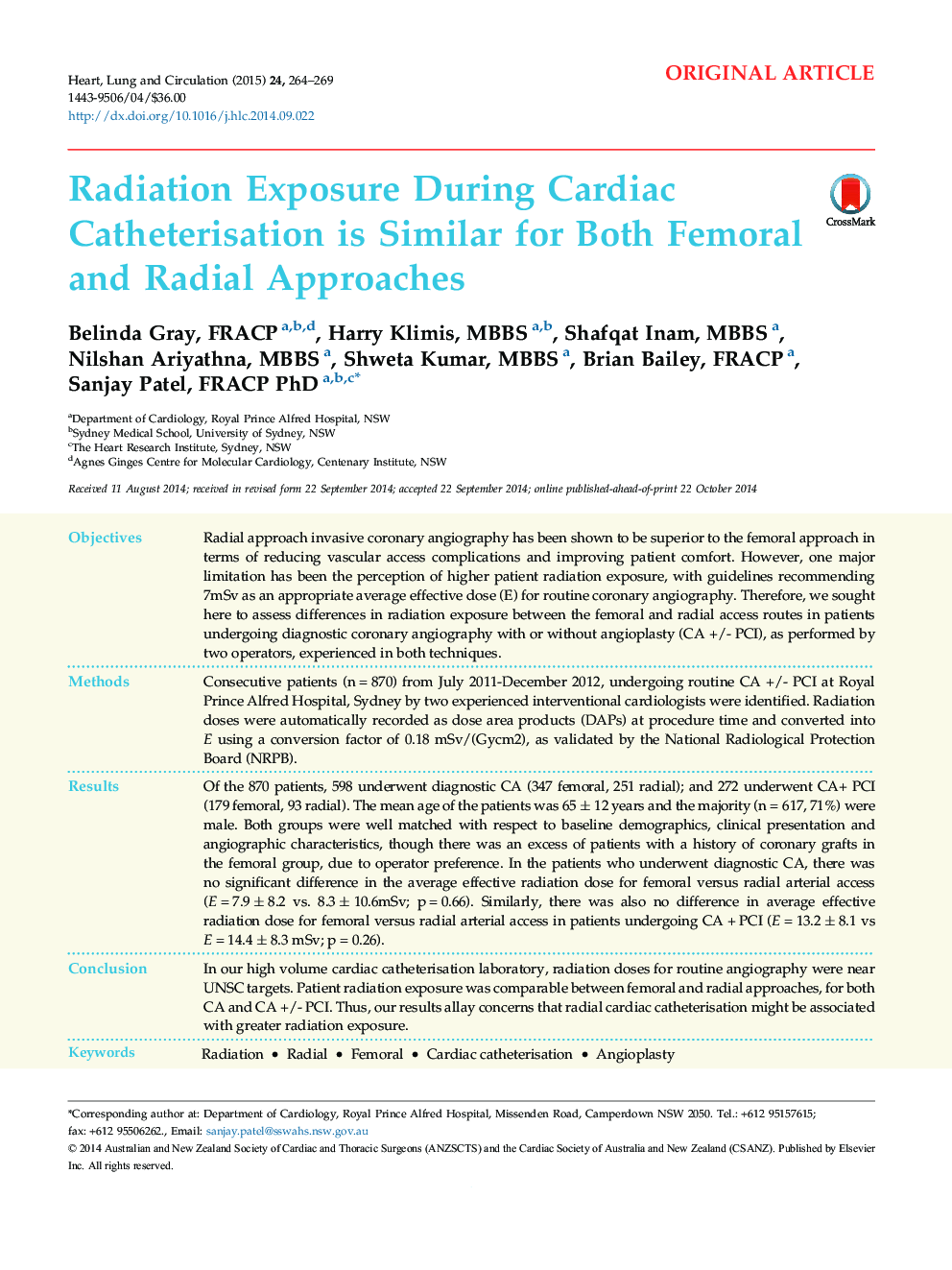| کد مقاله | کد نشریه | سال انتشار | مقاله انگلیسی | نسخه تمام متن |
|---|---|---|---|---|
| 2917064 | 1175655 | 2015 | 6 صفحه PDF | دانلود رایگان |
ObjectivesRadial approach invasive coronary angiography has been shown to be superior to the femoral approach in terms of reducing vascular access complications and improving patient comfort. However, one major limitation has been the perception of higher patient radiation exposure, with guidelines recommending 7mSv as an appropriate average effective dose (E) for routine coronary angiography. Therefore, we sought here to assess differences in radiation exposure between the femoral and radial access routes in patients undergoing diagnostic coronary angiography with or without angioplasty (CA +/- PCI), as performed by two operators, experienced in both techniques.MethodsConsecutive patients (n = 870) from July 2011-December 2012, undergoing routine CA +/- PCI at Royal Prince Alfred Hospital, Sydney by two experienced interventional cardiologists were identified. Radiation doses were automatically recorded as dose area products (DAPs) at procedure time and converted into E using a conversion factor of 0.18 mSv/(Gycm2), as validated by the National Radiological Protection Board (NRPB).ResultsOf the 870 patients, 598 underwent diagnostic CA (347 femoral, 251 radial); and 272 underwent CA+ PCI (179 femoral, 93 radial). The mean age of the patients was 65 ± 12 years and the majority (n = 617, 71%) were male. Both groups were well matched with respect to baseline demographics, clinical presentation and angiographic characteristics, though there was an excess of patients with a history of coronary grafts in the femoral group, due to operator preference. In the patients who underwent diagnostic CA, there was no significant difference in the average effective radiation dose for femoral versus radial arterial access (E = 7.9 ± 8.2 vs. 8.3 ± 10.6mSv; p = 0.66). Similarly, there was also no difference in average effective radiation dose for femoral versus radial arterial access in patients undergoing CA + PCI (E = 13.2 ± 8.1 vs E = 14.4 ± 8.3 mSv; p = 0.26).ConclusionIn our high volume cardiac catheterisation laboratory, radiation doses for routine angiography were near UNSC targets. Patient radiation exposure was comparable between femoral and radial approaches, for both CA and CA +/- PCI. Thus, our results allay concerns that radial cardiac catheterisation might be associated with greater radiation exposure.
Journal: Heart, Lung and Circulation - Volume 24, Issue 3, March 2015, Pages 264–269
